Smoke Damage In Your Home: Pro Tips On Insurance, Cleaning, Cost & More
Understanding what smoke damage is and how it affects the items in your home can help you put a stop to its destructive nature. Smoke and soot residues will continue to cause damages long after the fire is out, and the damage only gets worse as more time passes.
We’ve put together this handy guide so you can understand everything you need to know about smoke damage in your home and what you can to do to protect yourself and your property.
Is It Safe To Stay In A House Affected By Smoke Damage?
The quick answer: it depends on the extent of the damage, but you should definitely consult a fire and smoke damage professional before re-entering the premises. This is especially true if the smoke damage is heavy or moderate.
During a fire, a variety of different materials are combusting like building materials, household products, exposed asbestos, and other things. This can produce toxic smoke, can release volatile organic compounds (VOCs), and particulate matter.
When these chemicals are released into the air and start to mix and interact with each other, it can produce hazards such as carcinogens, poisonous gasses, and other toxins that can cause serious illness, cancer, and even death.
Contact a fire restoration company near you or call the non-emergency line for your local fire department. They will be able to evaluate the situation and determine if the scene is too hazardous for human exposure.
How Does Smoke and Soot Cause Damage?
To understand how smoke and soot residues can damage your belongings, you first need to know that soot is an acidic residue left behind after a fire.
Because it is acidic, smoke and soot residues can quickly cause permanent damage to porous materials and plastics.
It takes longer for less porous materials to show damage, but don’t assume they aren’t affected. The longer smoke and soot residues are present, the greater the risk for damage.
What Can Be Saved After Smoke Damage?
After a fire it may seem that all is lost, however, the contents of your home can be cleaned and restored. What can be salvaged depends on four factors:
- The type of material
- How long the material or item was exposed to smoke or soot
- Whether the item is burned or charred
- Whether or not its cheaper to restore or replace
With this said, there are certain things that you must absolutely dispose of after a fire for safety reasons. These include:
- Burned clothing or other textiles that come into contact with skin. While you can clean clothes or textiles with smoke damage, it’s best to throw out burned items (especially childrens clothes). Why? Toxic chemicals could be trapped in the fabric and absorbed by the skin.
- Food. Whether its opened or unopened, canned, jarred, or boxed, we always advise people to throw out food if they think it’s been exposed to fire, soot, water, or firefighting chemicals. It’s simply not worth the risk.
- Cosmetics, hair products, and other toiletries. Inspect these items for signs of heat exposure, soot, or chemicals from firefighting efforts. The high heat can alter the chemicals within the products and lead to health risks.
- Medications. The high heat from the fire can alter the chemicals within your medication and affect their potency. It’s best to toss them and get a refill on your prescription.
Smoke Damage To Appliances
Plastic or porous items – think small appliances, marble countertops, flooring, and alabaster – are often permanently discolored due to smoke damage. Harder surfaces like countertops, fiberglass items, and large appliances can begin to yellow within a few hours after a fire.
Yellowing also affects painted walls and hardwood or vinyl floors within a few days. The hardest materials – glass and porcelain – will begin to show signs of etching after a few weeks.
Smoke Damage To Clothes and Other Textiles
More often than not, smoke damage to clothes and other textiles items, like drapes and upholstered furniture, can be cleaned and deodorized. Most of the time, professional restoration companies will place them in a ozone chamber, using commercial-grade laundry detergents, dry cleaning, or use other cleaning methods.
However, as we mentioned above, this will depend on whether or not the item was burned or charred and the type of material. For instance, fur and other fabric materials are sometimes impossible to clean.
Smoke Damage To Electronics
Most of the time electronics can be restored by a professional, but again, it depends on some of the factors we mentioned above.
Cleaning electronics after smoke damage is not as easy as cleaning clothes or textiles, because you can’t immerse them in water.
This cleanup process is definitely not a DIY job and it’s important to get your electronics evaluated by a professional before booting them up again.
The components within most electronics are very sensitive and when compromised by corrosiveness of smoke and soot, become a safety hazard.
This corrosion can lead to increased resistance in circuits and connections, overheating, and short circuiting. Sounds like a recipe for another fire damage disaster, doesn’t it?
For this reason, it’s best to leave cleaning smoke damage to electronics to the professionals.
Cleaning Smoke Damage: Do’s & Dont’s
We cannot stress this enough: DO NOT attempt to clean smoke damage by yourself ifmoderate or heavy smoke damage is present. For safe measure, you should always consult professionals due to the carcinogens and other toxins that might be present.
However, let’s say you suffered from a very light smoke damage, then you can take the DIY route if you absolutely insisted.
Because smoke and soot residues continue to damage your belongings for days and even weeks after a fire, it is important that cleanup begins as soon as possible to protect your belongings and reduce your losses. Many items susceptible to smoke damage can often be restored, but only when cleanup begins early.
Due to the stickiness and greasiness of soot, improper cleaning procedures can cause further damage, which is another reason to let the professionals handle this.
If you plan to clean the smoke and soot residues yourself, follow these tips below to make the process easier.
- Remember, exposure to soot and smoke can be dangerous, no matter the scale of the damage. Wear protective gear before cleaning. This includes nitrile or latex gloves, goggles, face masks, and/or a respirator.
- Also, remember soot can embed itself very easily into things. Do not directly touch it or attempt to clean it directly, as it will quickly spread to other surfaces and make cleaning more difficult.
- Do not attempt to clean wet or damp items. Wait until they are dry.
- Use a HEPA vacuum to remove loose particles. DO NOT let the vacuum touch the surface. Instead, insert smaller plastic tubes into the main suction tube to gently aid the process.
- Purchase a soot sponge (AKA a ‘dry soot sponge’) to clean a dry soot or on flat, porous surfaces, like unfinished wood, drywall, plaster, or low gloss painting surfaces.
- Clean from the top down. Start with the ceiling and work your way to the baseboards.
- Use a wet wash (AKA degreasing agents) to clean a wet soot on non-porous surfaces, like countertops, paneling, furniture, fixtures, high-gloss paint surface, and tile.
- Open the windows and place fans in the room to ventilate the area. This helps to remove the smoke smell and makes for safer breathing conditions.
- Turn off the ac to prevent soot from spreading throughout the home and change the filter. Turn back on when done cleaning, and check the filter at least once a day to ensure there’s no soot residue.
- Don’t forget about items that fire or smoke didn’t directly or immediately affect. Assume that soot residue is covering every surface area in your home even if the damage is not yet visible
Does Insurance Cover Smoke Damage?
Thankfully, most insurance policies cover smoke damage and will pay for the cost of cleaning.
This usually covers smoke damage resulting from fires, lightning strikes, electrical fire damage, and vandalism. However, most insurance policies will likely not cover smoke damage that was caused by cigarettes.
When Should I Call A Smoke Damage Cleanup Professional?
You’re safest bet is to contact a smoke damage cleanup professional to handle the job, especially if it was a larger fire loss. Like we mentioned earlier, exposure to smoke and the carcinogens produced after a fire is extremely hazardous.
In addition to the danger, it’s also difficult to remove soot and smoke odors without the right skills and industry-grade equipment.
In the long run, you’ll save more money by partnering with a professional smoke damage restoration company than you would if you attempted to clean on your own.
Need a Smoke Damage Cleanup Company in the Dallas/DFW Area?
Regent Restoration provides emergency fire damage cleanup in the Dallas and Ft. Worth areas. Our IICRC certified technicians will respond 24/7 to provide you with the highest quality service whenever you need us most. When we arrive we’ll clear away debris, deodorize your home, deep-clean affected materials, and rebuild the burnt structure. Contact us now!

